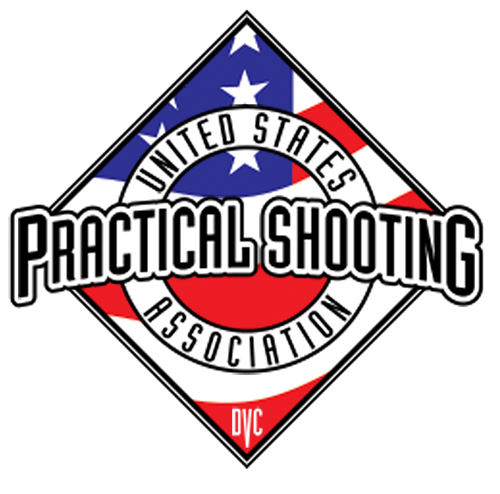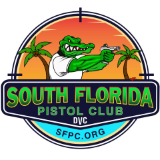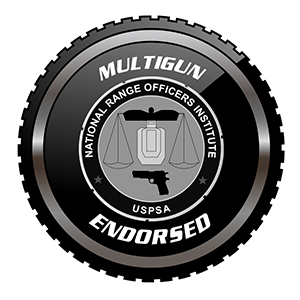Important SFPC Documents
SFPC On-Line Membership Application (Practiscore.com)
SFPC Safety Briefing and Release Form to Bring
Shooters Agreement:
All shooters are required to help with Stage Setup, Reset, and Tear Down by Loading the Trailer at the end of the event. Exceptions are for shooter disabilities or recovering injuries.
View videos below for brief examples on our rules and Information:
Matches on Tuesday and Thursday nights are at the Markham Park 100 yard range
Matches on Sunday are at the Markham Park 50 yard range

Updated Sept 2017
Every top shooter in the country today was once a beginner and arrived at their very first match with butterflies in their stomach and wondered what they had gotten themselves into.
The format of a typical match has not changed much since the sport was first founded. There may be some regional differences in how matches are run but this guide will give you a rough idea of what to expect and the meaning of some of the common terminology that you may encounter.
We will assume that you have completed a basic safety course and are familiar with the operation of your gun. You should be familiar with the basics of loading, unloading, magazine changes and drawing from a holster. If you are not proficient with these skills, then it is in your best interest to learn them before entering your first match.
CAUTION!
This guide is not a substitute for a firearm safety and training course.
Before You Leave Home
Before heading to the range, you should download and read the SFPC Safety Briefing document. The document includes information about the club and range firearms safety requirements, including a list of range commands that are used when shooting each stage.
In addition to reading the SFPC Safety briefing, you will need to prepare for your first match and ensure you have all the proper equipment.
For the first match, you need to arrive early to attend the new shooter briefing. 7:45 AM on weekends, 5:45 PM weeknights.
On the day of your first match you will need to have the following items with you:
- Gun and magazines (ideally you should have at least 4 magazines)
- Ammunition (typically 120 rounds will be plenty for a local match, 150+ for steel challenge).
- Holster, belt and magazine pouches (holster must cover the trigger guard).
- Shooting glasses, ear-plugs and/or ear-muffs (preferably both).
- Good boots or shoes that support the ankle, hiking boots or sporting shoes are both good.
- A bag to cart all your stuff around ,sun block and a pair of gloves.
- Plenty of water or cold drinks and possibly a snack (the matches will last several hours)
Arriving at the Range
Once you have all that you need, get yourself to the range. Stage setup is done by members of the club. If members don’t help set up the stages, the match will be delayed. Always try to arrive early as this will give you time to assist with the stage set up and allow you to examine the stages after they are set up and before the shooting starts.
Registering to Attend a Match
The club uses electronic scoring and registration is handled by the Practiscore web site. The SFPC Practiscore page contains a list of events scheduled for the next month. Click the link for the match you want to attend, and follow the instructions to fill out the on-line form. Once your registration is approved you will receive an email containing a link where you can pay the match fee, and select a squad number.
You will stay with your assigned squad for the entire match and move from one stage to another to complete each stage. If you don’t know anyone at the club then mention this to the person doing the on-site registration and they should be able to recommend someone to guide you through your first match. Most of our members club will go out of their way to assist new shooters, so don’t be afraid to ask for help.
Getting Ready
Once you have registered, and have been entered into the electronic scoring system, you should ensure your magazines are ready and put on your holster.
You may only handle your firearm in the Safety Area or under the direct supervision of a Range Officer during a course of fire (COF). Handling the firearm anywhere else is a disqualification infraction. On the Pistol and Rifle range (Thursdays) the safety table usually up range from Stage #1. On the BSO range (Sundays), it is the area between the left wall and the steel container where the safety table is located. Stay behind the safety table.
Feel free to load your magazines wherever you want, but NOT in the Safety Area – so that you are ready for the start when you are called.
Match Briefing / Shooters Meeting
At the start of each match there will be a shooter’s briefing or meeting where the Match Director will go over any pertinent information that you may need, there could be some announcements of future matches for example.
Once that is done, the Written Stage Briefing (WSB) will be read. This is called the Stage Briefing and will provide several key points concerning the stage. These include, Start Position, Stage Procedure, Scoring type (Comstock, Virginia), Number of rounds, Total Points available, Number of Targets, Types of targets, Scored Hits and any penalties that could be assessed.
• Start Position – The location, shooting position and stance prescribed by a COF prior to issuance of the “Start signal”.
• Stage Procedure – Basic guide to shooting the stage.
• Virginia – You can only shoot the specified number of rounds, any more and penalties will apply.
• Comstock – You can shoot as many rounds as needed to complete the COF.
• Number of Rounds – The minimum (or total for Virginia Count) rounds that will be required for this stage.
• Total Points – The number of points that are available, typically this is FIVE times the number of rounds, a twenty round stage is typically worth 100 points.
• Target types – This describes the number and types of targets for the COF.
• Scored Hits – Describe the number of shots per target that will be scored (Comstock or the maximum number of shots for Virginia count).
• Penalties – This section lists the values for the penalties that could be assessed if they occur.
Try to get near the front of the crowd while the briefings are being read so that you can hear what is being said and get a look at the stage. If there is anything that you are not clear about, then please ask the Match Director or the Range Officer for some clarification. There is no such thing as a stupid question.
Once that course description has been completed, for each stage, all the shooters will move to the next stage and the entire process is repeated until all the stage briefings have been given.
Then the Match Director will announce for everyone to go to their assigned starting stage. Typically there will be a squad for each stage and each squad will hold a similar number of shooters. So if a match consists of 3 stages and there are 45 shooters then each squad will have approximately 15 people in it.
Find the stage where you are to start and head over to join the other members of your group. Once you have made your way to the correct stage, the butterflies are doing acrobatics in your stomach but don’t worry, it’s going to be okay. First things first, someone will be holding the scoring tablet, find out where you are in the shooting order so you can be ready when your turn comes. If you have any questions, just ask someone, everyone is there to help, we all want your first match to be fun.
Walk-Through
The stage walk-through is a vital part of each stage; this is the opportunity for you to walk through the course of fire as if you were shooting it. Leave the gun in the holster at this point, handling the gun without the supervision of an RO (Range Officer) causes a tremendous amount of excitement… but not the good kind. If you do this, you will suffer a match disqualification which means you will not be allowed to shoot anymore that day.
If you are unsure of the best way to shoot the stage – and bear in mind there may be many different ways to successfully shoot a stage – then don’t be afraid to ask for help. The stage is designed as a puzzle, which may have multiple solutions to solve, that is where the fun starts. We were all new at this once and everyone will happily offer advice. The trick, at least for the first few matches, is to keep it simple. Develop a plan that is simple and execute your plan correctly.
Procedure
Once the walk-through is done, it’s time to start shooting. There will be an RO (Range Officer) and a Score Keeper. These are usually people that have assisted with many few matches and who are familiar with the rules. Some have completed extensive training to become Certified Range or Safety Officers.
The Score Keeper will call out the name of the first, second and third shooter. The first shooter will be called the ‘shooter’, pretty obvious so far, the second shooter will be called as ‘on deck’, and the third shooter will be ‘in the hole’.
If you are called to shoot first, tell the Score Keeper that you would like to be moved down a bit in the shooting order. This gives you an opportunity to watch some other people shoot the stage, and perfect your plan, before it’s your turn in the spotlight. If it is truly your ‘first’ match, you might consider asking the RO to coach you through your first stage.
Workers
When a shooter is not the next shooter, or reloading, they are expected to assist in the pasting targets and the resetting steel between shooters. When the club shoots on the Sheriff’s range, all bullet cases need to be picked up and placed in the appropriate buckets.
Patching or Taping – Grab a strip of the target pasters and, AFTER the RO scores the targets, you patch the holes. There are usually white pasters for the no-shoot targets and black pasters for the hardcover targets. Make sure that the paster is pressed down firmly.
Range Commands
You should be familiar with the standard range commands, such as:
“Make Ready” – This command signifies the start of “the Course of Fire”. Under the direct supervision of the Range Officer the competitor must face down range, or in a safe direction as specified by the Range Officer, fit eye and hearing protection, and prepare the handgun in accordance with the written stage briefing. The competitor must then assume the specified start position. The Range Officer will not proceed with any further range commands until the competitor is still and is in the correct start position.
“Are You Ready?” – The lack of any negative response from the competitor indicates that he fully understands the requirements of the course of fire and is ready to proceed. If the competitor is not ready at the “Are You Ready?” command, he must indicate to the Range Officer that he is not ready.
“Standby” – This command should be followed by the start signal within 1 to 4 seconds.
“Start Signal” – The signal for the competitor to begin their attempt at the course of fire. If a competitor fails to react to a start signal, for any reason, the Range Officer will confirm that the competitor is ready to attempt the course of fire, and will resume the range commands from “Are You Ready?”.
“Stop” – Any Range Officer assigned to a stage may issue this command at any time during the course of fire. The competitor must immediately cease firing, stop moving and wait for further instructions from the Range Officer.
“If You Are Finished, Unload And Show Clear” or “Unload and Show Clear” – If the competitor has finished shooting, he must lower his handgun and present it for inspection by the Range Officer with the muzzle pointed down range, magazine removed, slide locked or held open, and chamber empty. Revolvers must be presented with the cylinder swung out and empty.
“If Clear, Hammer Down, Holster” or “If Clear, Cylinder Closed, Holster” (for revolvers only) – After issuance of this command, the competitor is prohibited from firing. While continuing to point the handgun safely downrange, the competitor must perform a final safety check of the handgun as follows:
Self-loaders – release the slide and pull the trigger (without touching the hammer or decocker, if any).
Revolvers – close the empty cylinder (without touching the hammer, if any).
If the gun proves to be clear, the competitor must holster his handgun.
If the gun does not prove to be clear, the Range Officer will resume the commands from’ If You Are Finished, Unload And Show Clear’
“Range Is Clear” – This declaration signifies the end of the Course of fire. Once the declaration is made, officials and competitors may move forward to score, patch, reset targets etc.
Do not try to set any speed records at your first match, the idea is to get comfortable with the gun, be smooth and, most importantly, be safe.
Scoring
The RO will now proceed to score your targets – don’t worry about picking up your brass cases or your empty magazines, usually your squad-mates will take care of that – you will get plenty of opportunities to pay back this kindness later. Follow the RO around as he scores your targets and look at where your shots are. If they are too low or too high then some adjustment of your sights may be in order. The RO will call out the hits and misses and the no-shoots and the procedural errors that you had for running over the fault lines that you no doubt missed in all the excitement. The job of the Score Keeper is to immortalize all this data on the electronic scoring tablet and total up all the hits, misses and no-shoots etc.
Preparation
Clean your magazines that you dropped all over the floor and load them up ready for the next stage. Cleaning your magazines is important because dirt, sand etc. can work it’s way into the magazine and cause malfunctions.
Helping
Once you have prepared everything for the next stage, you should help out with the Pasting or picking up Brass. Helping to paste and pickup brass keeps the squads moving and prevents delays in the match. Alternatively you may want to follow the Score Keeper around to see how the electronic scoring is done. Once you are familiar with the scoring, you will be able to do this duty yourself.
End of Match
This is where the gloves come in, the stages are dismantled and all the props are put away. Please help to tear down the last stage that you shot, if everyone does a little then no-one has to do a lot. While all this is going on someone will be collecting all the scoring tablets and synchronizing them to the master to calculate who won and the final positions of every competitor. This scoring process usually is completed shortly after the match is completed. The results will be posted on the website as soon as they have been uploaded.
Congratulations
You have completed your first and hopefully not your last competitive shooting match. The more matches that you shoot; the more your confidence will grow. At the start it is important to focus on the basics of Practical Shooting, don’t try to set the world on fire with blazing fast times, just focus on safety, moving smoothly and hitting the targets. Once the confidence has started to build then feel free to experiment with different techniques for shooting stages and for moving from one target array to another.
Your first match is like the first time you got behind the wheel of a car, there are all these knobs, levers, pedals and switches and it can all be a little overwhelming. So just focus on the simple things. After a few driving lessons you were able to steer and use turn signals without conscious thought, but in the beginning you had to think about every action. This is the same with shooting, thinking about each action will mean that it will take you longer to shoot a stage – and that’s okay – you are just at the beginning of your shooting. We were all beginners once, even the World Champions went through this same learning experience, if they can do it, then you can do it.
Affiliation
If you only decide to shoot local matches, then a club membership is for you. SFPC membership offers a discounted match fee, which easily pays for itself. National affiliations (USPSA, SCSA and IDPA) are required to compete at larger matches, and have a classifier system that ranks you by comparing your score to those of many other shooters.



